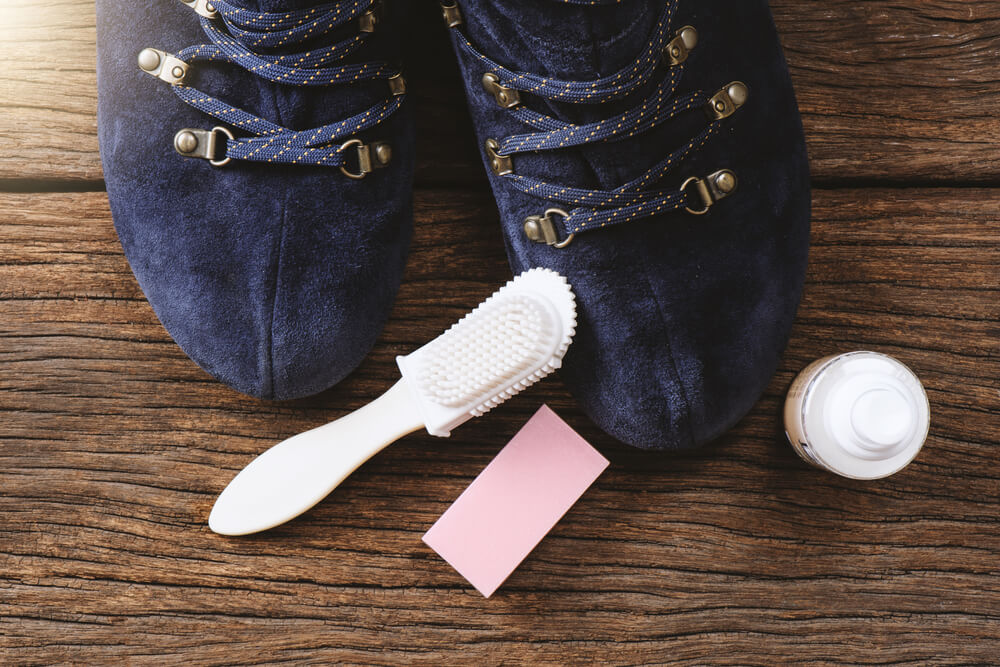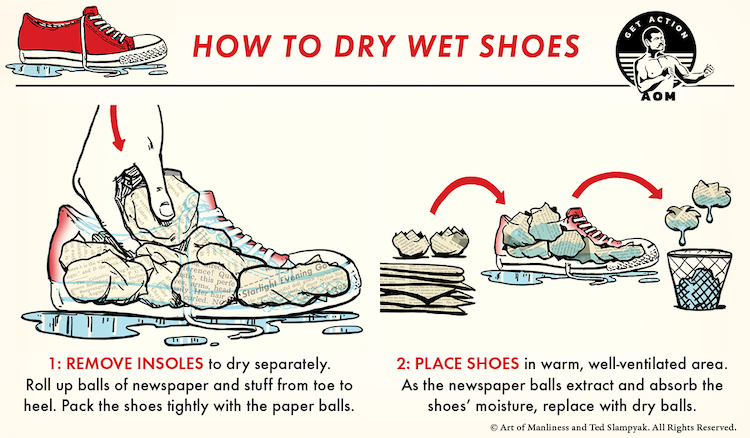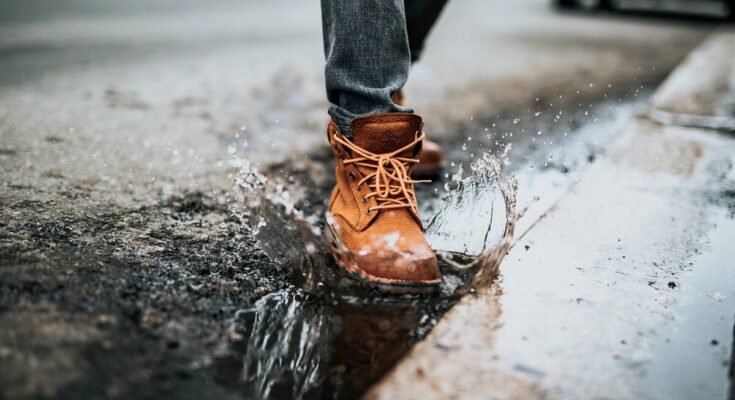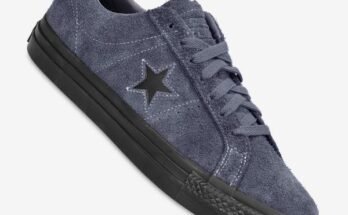When shoes get wet, they can become damaged and uncomfortable to wear. The moisture can weaken the materials and cause unpleasant odors, leading to potential mold growth.
Additionally, wet shoes can also lead to blisters and discomfort for the wearer. It’s important to properly dry wet shoes to prevent these issues and extend their lifespan. We’ll explore the effects of wet shoes, the potential damage it can cause, and the best methods for drying and caring for wet footwear to ensure they remain in good condition.
By understanding the impact of wet shoes and how to address it, you can keep your footwear in top condition and avoid potential discomfort and damage.
Credit: nisolo.com
Effects Of Wet Shoes
Wet shoes can be a real hassle. Whether you were caught in a rainstorm or stepped in a puddle, wet shoes can cause a variety of problems. Apart from discomfort, wet shoes can also cause some serious damage to the material and lead to an unpleasant odor. In this post, we’ll explore the effects of wet shoes in more detail.
Damage Material
When shoes get wet, the material can become damaged. Leather shoes, for example, can warp and crack when they dry too quickly, while suede shoes can become discolored. In addition, the glue holding the shoes together can weaken, causing the soles to come loose. Wet shoes can also cause the insoles to become misshapen or detach from the shoes.
To prevent damage to your shoes, it’s important to dry them out slowly. Avoid using direct heat sources like hair dryers or radiators, as this can cause the material to become stiff and brittle. Instead, stuff your shoes with newspaper and let them dry naturally in a well-ventilated area.
Unpleasant Odor
One of the most common effects of wet shoes is an unpleasant odor. When shoes get wet, bacteria can grow inside them, causing a foul smell. The smell can be particularly bad if you wear your shoes for long periods without allowing them to dry out properly.
To get rid of the odor, you can try sprinkling baking soda inside your shoes and leaving it overnight. You can also use an antibacterial spray or insert odor-absorbing insoles into your shoes.
Now that you know the effects of wet shoes, it’s important to take proper care of your footwear. Always dry your shoes out slowly and thoroughly to prevent damage to the material and unpleasant odors.

Credit: shoewash.ca
Common Mistakes To Avoid
When shoes get wet, it’s crucial to take the right steps to prevent damage and maintain their quality. By avoiding common mistakes, you can ensure that your shoes remain in good condition and are ready for use once they dry.
Delaying Drying
Leaving wet shoes to air dry naturally can take a long time and may lead to mold and mildew growth. Instead, remove any excess moisture by dabbing the shoes with a dry cloth, then stuff them with newspaper to absorb the remaining water. This method helps to speed up the drying process and prevents the development of unpleasant odors.
Direct Heat Sources
Avoid exposing wet shoes to direct heat sources such as radiators, fireplaces, or hairdryers. High temperatures can cause the material to warp, crack, or shrink, damaging the overall structure and appearance of the shoes. Instead, opt for indirect heat by placing the shoes in a well-ventilated area at room temperature.
Ignoring Cleaning
After shoes get wet, it’s essential to clean them properly to remove any dirt or debris. Use a soft brush to gently scrub the surface and a damp cloth to wipe away any remaining residue. This prevents the accumulation of grime and helps to maintain the quality of the material.
Proper Care Techniques
Proper care techniques for wet shoes are crucial to prevent damage and maintain their quality. When shoes get wet, taking immediate action, using proper drying methods, and employing effective cleaning tips is essential for preserving their integrity. Let’s delve into these techniques to ensure your shoes stay in top condition.
Immediate Action
When shoes get wet, it’s important to take immediate action to prevent damage. Remove the excess moisture by gently dabbing the shoes with a dry cloth. Stuff them with newspaper to absorb the remaining moisture and help retain their shape. Avoid exposing them to direct heat sources, as it can cause the material to warp or crack.
Drying Methods
Proper drying methods are essential to prevent mold and mildew growth. Air-drying the shoes at room temperature is the safest method. Avoid using a hairdryer or placing them in direct sunlight, as this can cause the material to dry too quickly and crack. Consider using a shoe drying rack to help maintain their shape during the drying process.
Cleaning Tips
After the shoes have dried, it’s important to clean them properly to remove any lingering dirt or residue. Use a soft-bristled brush to gently remove dirt and debris. For stubborn stains, create a solution of mild soap and water, then gently scrub the affected areas with a soft cloth. Allow the shoes to air dry completely before wearing them again.

Credit: www.artofmanliness.com
Preventive Measures
When shoes get wet, it is essential to take preventive measures to avoid damage. Wet shoes can lead to mold growth and unpleasant odors. To prevent this, always dry your shoes thoroughly before wearing them again.
Waterproofing
Waterproofing your shoes is an effective preventive measure to keep them dry and avoid damage caused by water. You can use a waterproof spray, wax, or silicone-based products to protect your shoes from getting wet. These products create a barrier that prevents water from penetrating the shoe’s material and thus, keeps your shoes dry.
Storage Tips
Proper storage of your shoes is another preventive measure to keep them dry. Always store your shoes in a cool and dry place away from direct sunlight or heat sources. Do not pile up your shoes on top of each other as it can damage the shape and structure of your shoes. Instead, use a shoe rack or shoe organizer to store them in an organized manner.
Other Preventive Measures
Apart from waterproofing and proper storage, there are other preventive measures you can take to keep your shoes dry. Here are some of them:
- Wear waterproof shoes or rain boots when it’s raining or when you’re walking through wet areas.
- Use an absorbent material like newspaper or a towel to dry your shoes if they get wet.
- Avoid wearing wet shoes as it can damage the shoe’s material and also cause foot infections.
- Apply a leather conditioner or shoe polish to your leather shoes to protect them from water damage.
Taking these preventive measures can help you avoid the damage caused by wet shoes and keep your shoes in good condition for a longer time. So, make sure to follow these tips to protect your shoes from getting wet.
Frequently Asked Questions
Are Shoes Ruined If They Get Wet?
Getting shoes wet can damage their materials and lead to mold and odor. It’s best to dry them thoroughly to prevent lasting harm.
What To Do If Shoes Get Wet?
To dry wet shoes, stuff with newspaper, let air dry, avoid direct heat, and use a shoe tree to maintain shape.
What Will Happen If You Wear Wet Shoes?
Wearing wet shoes can cause skin irritation, blisters, and fungal infections. It may also damage the shoes.
Does Rain Water Ruin Shoes?
Rain water can damage shoes by causing stains and weakening the material. It’s important to waterproof your shoes to protect them.
Conclusion
Understanding the effects of wet shoes is crucial for their maintenance and longevity. Proper care can prevent damage and prolong shoe lifespan. By following simple drying and cleaning methods, you can ensure your shoes stay in good condition. Don’t underestimate the impact of wet shoes on their durability.



